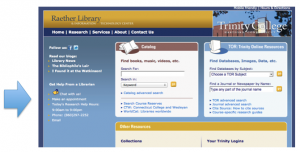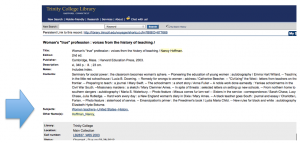
Our source detective question asked: McGuffey’s Readers series is one of the most popular textbooks of the nineteenth-century common school era. (See an 1879 digitized edition on Google Books). Is this series of books still in print and used to educate children today? Be sure to describe your search strategy.
The McGuffey’s Readers are a set of academic textbooks that were used originally in United States schools starting in 1836. The material ranges from early schooling and learning the beginning aspects of the alphabet, to connecting “ religious, moral, and ethical principles” (The McGuffey Readers Centers) to promote a population of good, American citizens. These set of readers were written by William Holmes McGuffey who was born in 1800 in Pennsylvania. By combining the McGuffey family’s emphasis on education with the importance of religion, William was able to create these readers, which were said to help “shape American character.” (The McGuffey Readers Center)
In an example of the McGuffey reader from a revised edition in 1879, it shows the how the lessons emphasize both correct English grammar, as well as a strong religious belief and a strong understanding of what an American is. At the introduction of this reader the first lesson emphasizes articulation in the English language. They say that “articulation is the utterance of the elementary sounds of a language and of their combinations.” (McGuffey, 9) As the 1879 McGuffey reader continues, there are more examples of literature from the time in essays and in poetry. Page 91 on the Googlebook digital reader has a poem called “What I live For”, which is a perfect example of emphasizing the type of American citizens that McGuffey readers aimed to shape. (McGuffey, 91)
In today’s society, although the McGuffey readers are no longer as popular in American schools as they were in the 19th century, there is still a population of loyal McGuffey followers. The video below (link missing) is an example of how these textbooks have been edited and updated throughout the years to be available to the following of mostly home-schooled students and Christian academies. The basic alphabetical rules and writing and reading strategies presented in the early stages of the McGuffey readers have been preserved to teach a small constituency of young students in today’s society. (The McGuffey Readers Center)
Today, there is an app available on iTunes, “Phonics and Reading” designed based on the McGuffey Primer textbook. A few features of the app includes 52 lessons of the McGuffey Primer, 44 letter sounds of English and more than 400 practice vocabulary words. The latest version of the series was last printed in 2010 published by both General Books and Applewood Books. There are also eAudiobooks available published by Mission Audio in 2010.
Search Process:
First, we started by using Google and the main history page on McGuffey’s site (http://mcguffeyreader.com) in order to find any background information and history on the McGuffey’s Reader series. Here we found the purpose of the series, the year published, material included and a video of how the textbooks are edited and updated today. We also scheduled an appointment with a librarian at the library. During our appointment, following are the steps the librarian took in order to find any additional information:
To get some background information on the reader, the librarian looked at Wikipedia. This brought him to this article. This article has some really good history in it. However, it might be a little biased. It is from Liberty University’s digital archive. It seems academic; but, Liberty is a very conservative Christian university.
To ascertain whether the book is still published, the librarian searched WorldCat (which is a database that searches most academic libraries around the world). He searched the title field on the advanced search page, using “McGuffey Eclectic Reader” as his search phrase. Here is the URL to the search results.
He then sorted the results by date descending, so that the most recent edition appeared at the top of the list. As we discovered, the most recent edition is from 2010. Here’s a link to a partial-view of the 2010 edition on Google Books.
(Formatting and links edited by Jack Dougherty, January 2013)
Works Cited
- McGuffey, William Holmes. McGuffey’s Fifth Eclectic Reader. Cincinnati: Bragg&Company, 1879. Google Book Search. Web. 30 Jan 2012.
- “The McGuffey Readers Center.” McGuffey’s Readers World. McGuffey Readers. Web. 30 Jan 2012.
- “Introduction to McGuffey Readers World Website.” YouTube. YouTube. Web. 30 Jan 2012.
- “McGuffey Readers.” YouTube. YouTube. Web. 30 Jan 2012.

